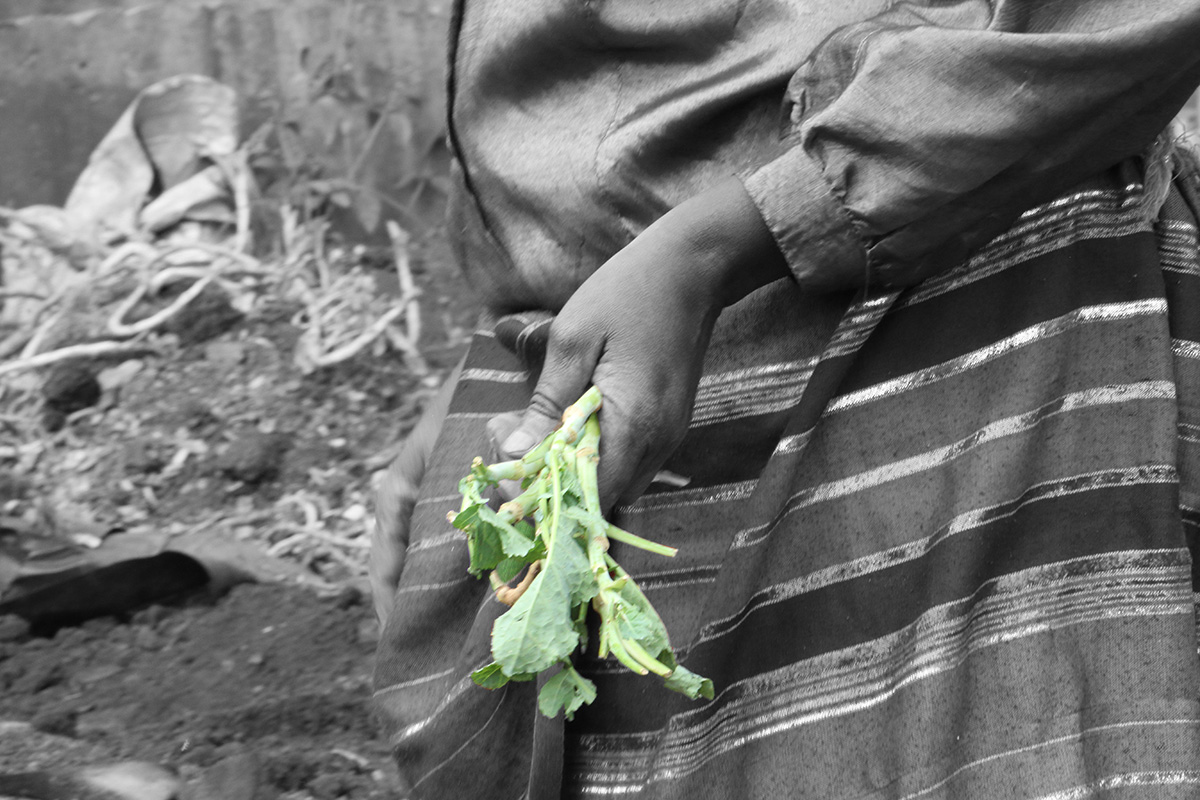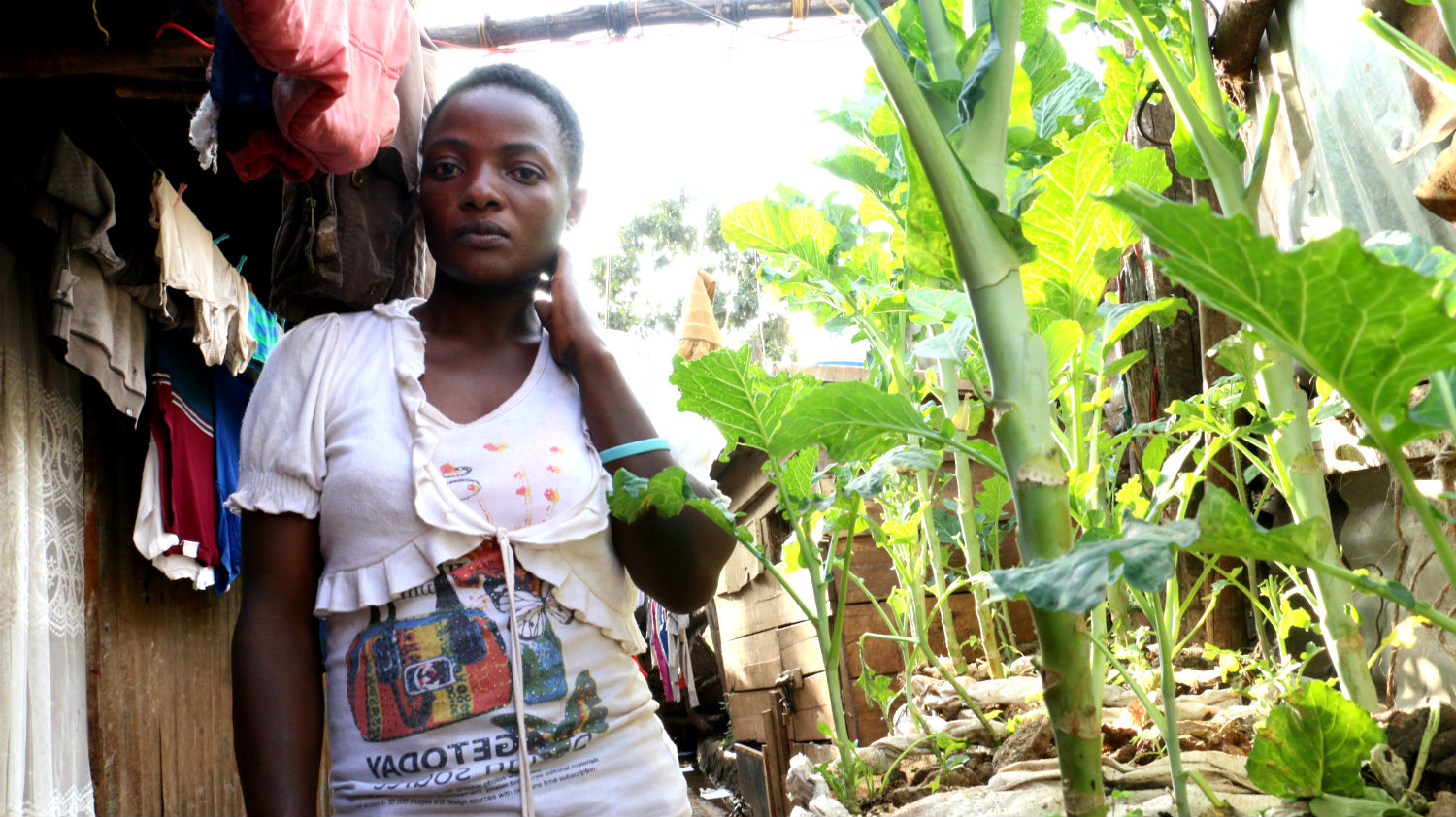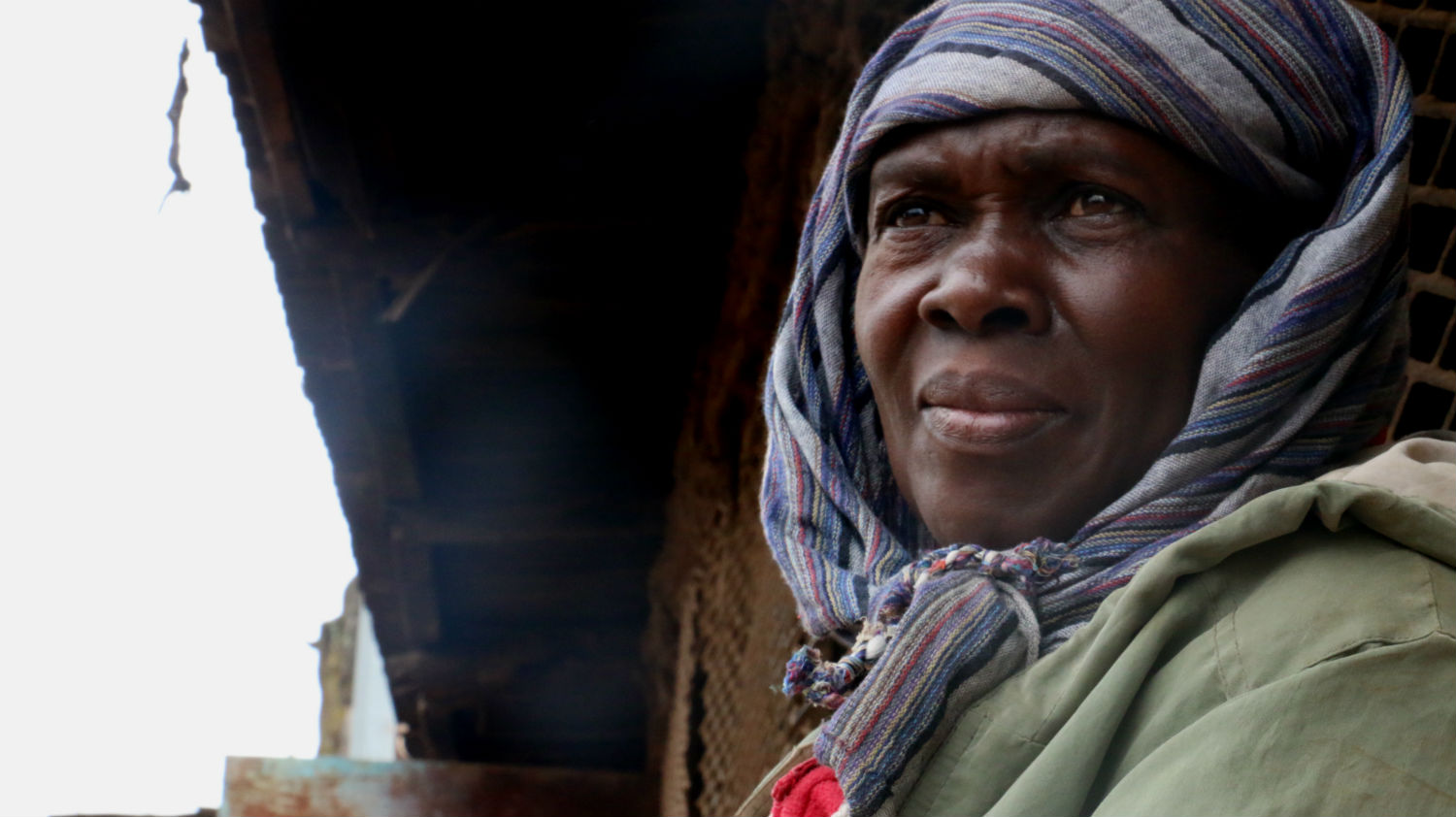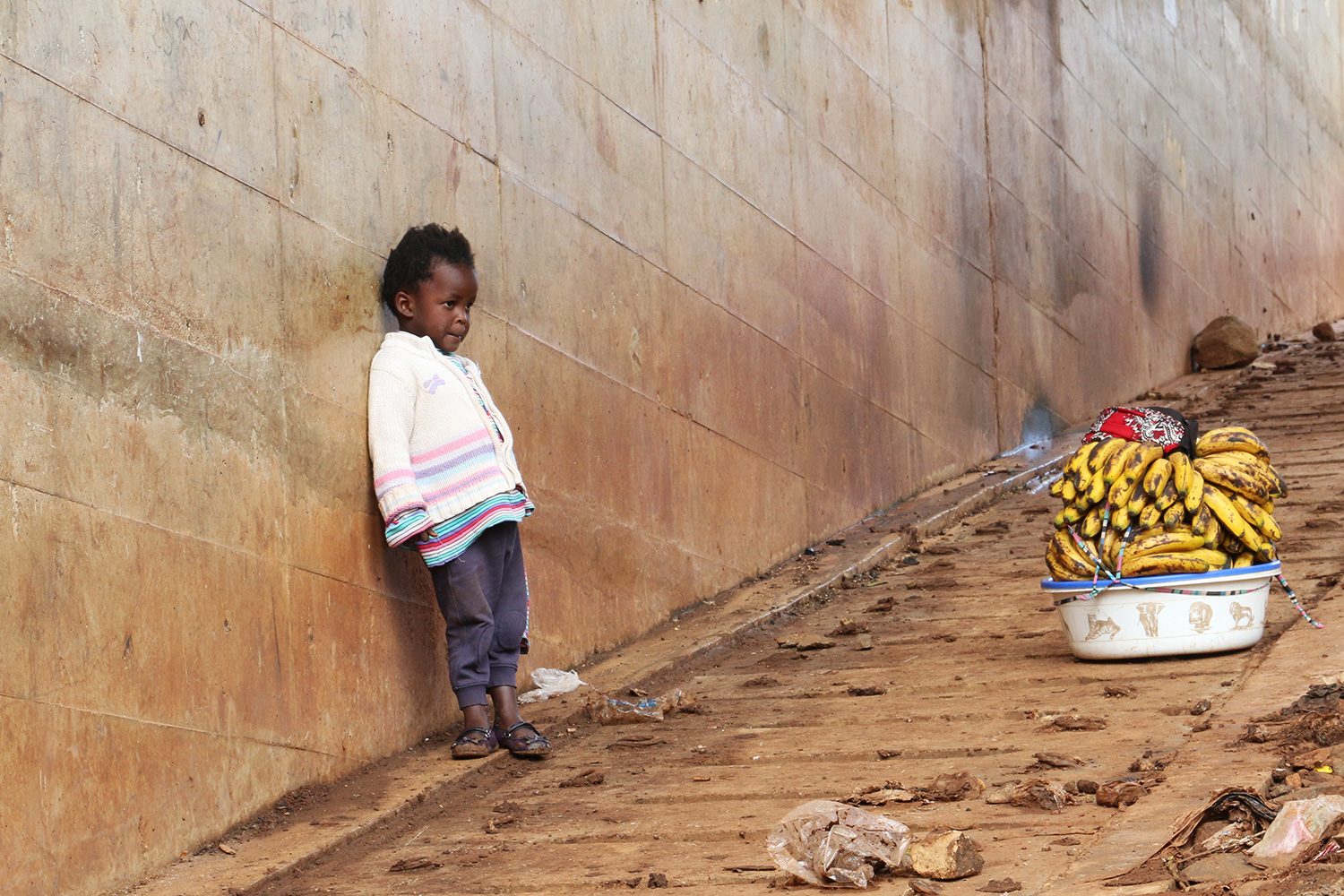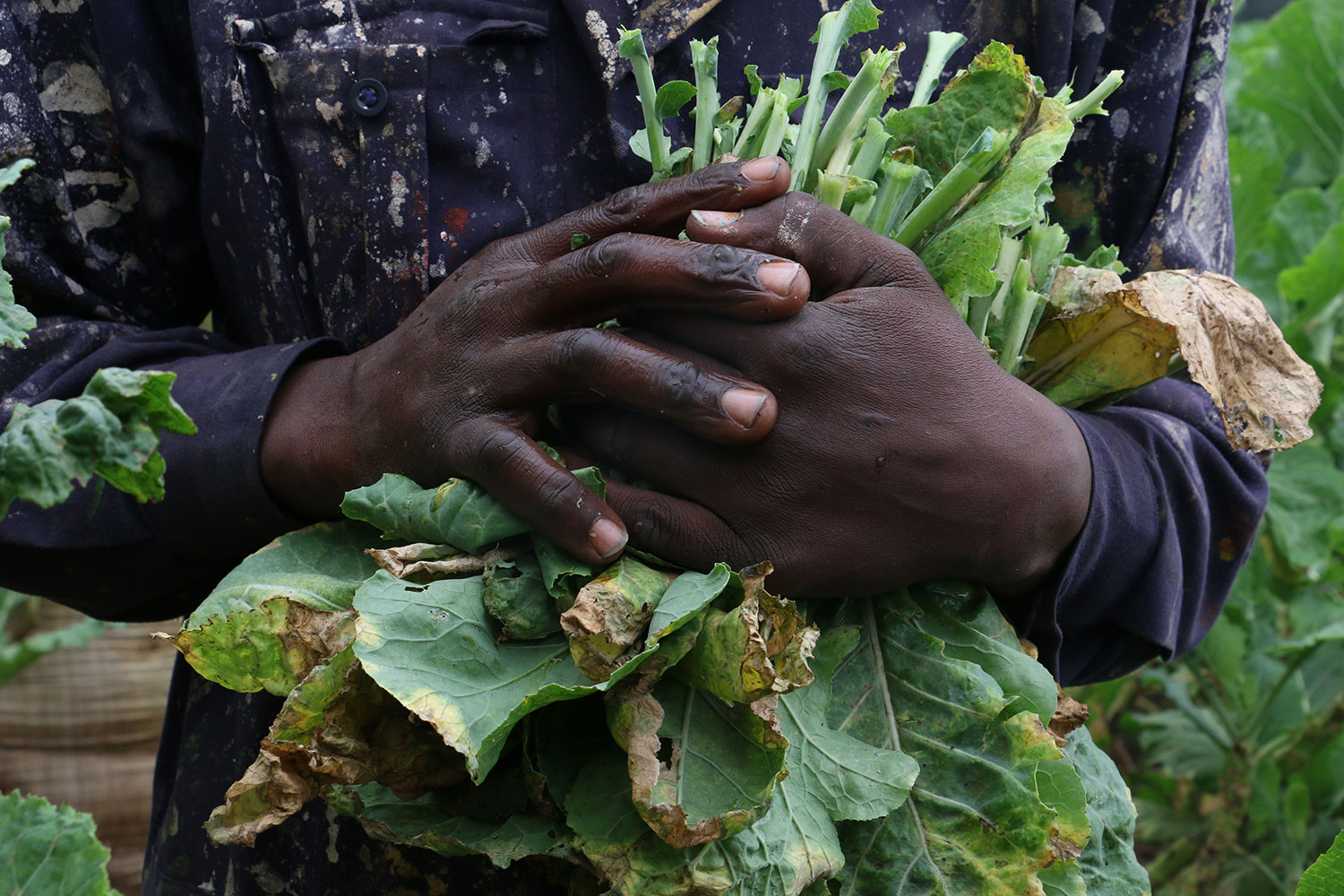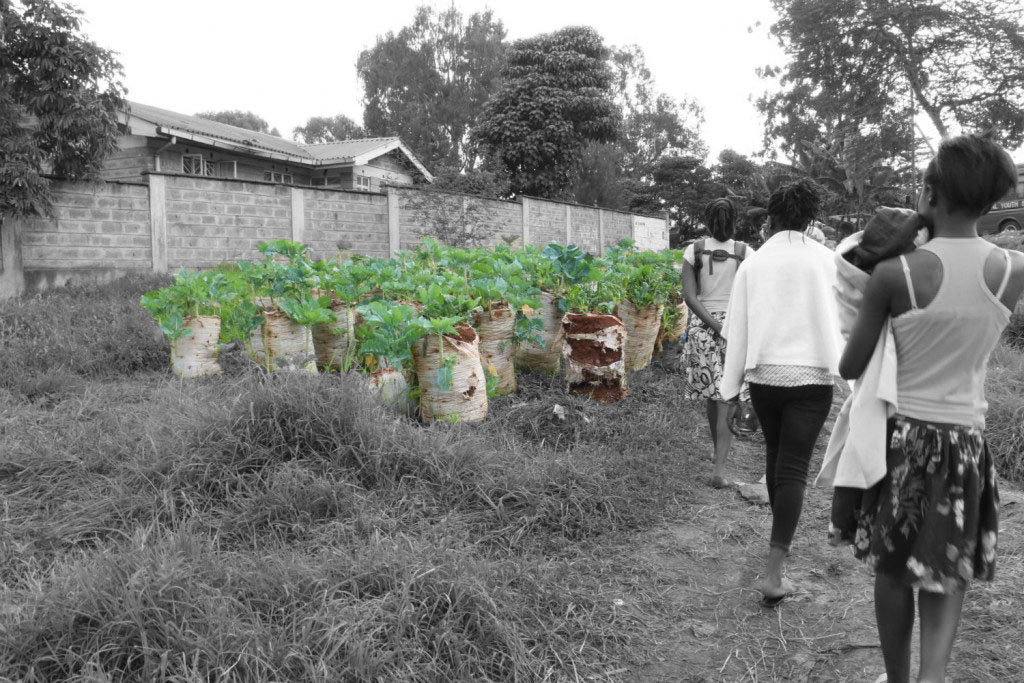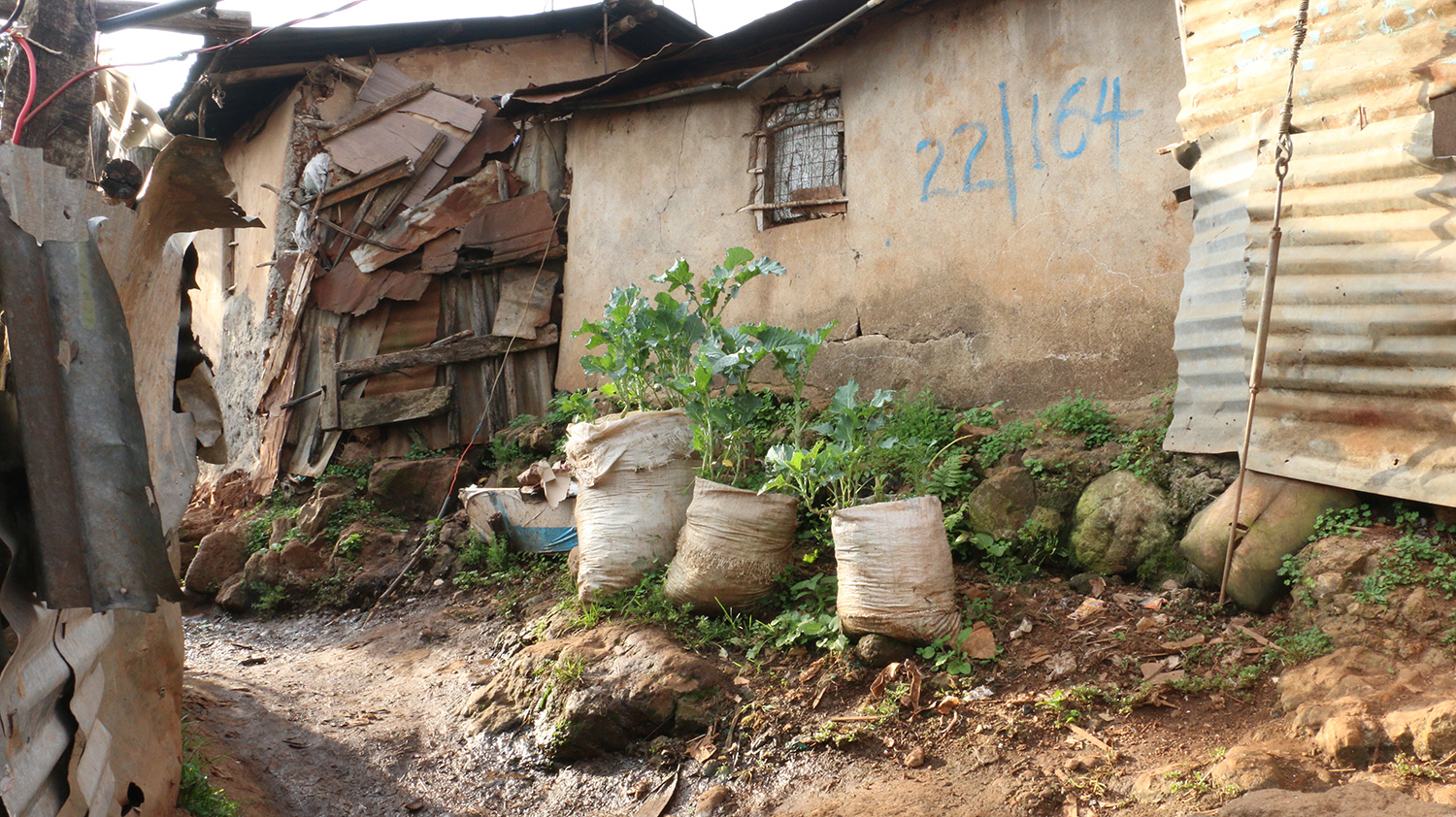
The project
A green revolution may be taking root, and it seems to be happening in an unexpected place: one of Africa’s largest slums. Kale, onions and tomatoes grow from repurposed rice sacks within a maze of winding pathways snaking between red, mud-walled shacks.
People don’t live here; they survive.
This is Kibera—a sprawling slum on the outskirts of Nairobi, Kenya. Rusted sheet metal roofs span over 2.5 square kilometres, representing the homes of an estimated quarter of a million people. Kibera is known by the locals as “chocolate city” because of how the rusted sheet metal roofs weave together to form a brown blanket nearly the size of New York’s Central Park.
Watch the video below to take a look at urban agriculture in Kibera.
Poverty touches everyone in Kibera. But women and children are the most affected. They are the leading figures behind the urban farming movement growing within the slum’s winding depths.
Urban agriculture has sprung up in cities across the globe over the last two decades. It has grown mostly out of necessity in response to rapid urbanization and food insecurity on in the developing world. Africa has some of the highest rates of urbanization on the planet. And most newcomers to large African cities such as Nairobi end up moving to urban slums like Kibera. An estimated 60 per cent of Nairobi’s 3.5 million people live in slums, according to African Population and Health Research Center.

Judy shows off her sack garden in Kibera’s Soweto West village. [Photo © Evelyn Harford]
When you combine this many people in a relatively small area, along with high rates of unemployment and poverty, it becomes easy to understand how the growth of urban agriculture comes from an imperative to find cheap, accessible, nutritious food.
Women contribute to the bulk of subsistence food production worldwide, says the Food and Agriculture Organization of the United Nations (FAO). This trend is also becoming apparent within urban agriculture in sub-Saharan Africa. Women make up an estimated 62 per cent of urban farmers in Nairobi, says Diana Lee-Smith, a long-time researcher of urban agriculture in sub-Saharan Africa.
Nairobi is a city experiencing fast-paced urbanization. Many of the women in Kibera have migrated from the rural regions of Kenya to seek employment and a better life for themselves, but many find themselves both poor and hungry. In an attempt to provide for their families, many search for alternatives.
Urban agriculture includes small-scale or medium-sized multi-crop agriculture plots within the confines of a city or, in the case of Kibera, within a densely populated slum. While there is no typical urban farming plot, most urban farmers find small parcels of undeveloped land near train tracks, between homes and on rooftops. In Kibera, it’s common for urban farmers to plant sack gardens which yield kale, spinach, tomatoes and onion as well as rearing small livestock like chicken, rabbits and ducks.
Photo Gallery: Different sized agriculture plots in Kibera. Ali is harvesting from his group’s 147 sack gardens. [Photo © Evelyn Harford]
I first encountered Kibera three years ago when was on a tour to visit local artisans in the slum. I noticed strange bags of what looked like lettuce growing out of old rice sacks tucked within the alleyways. I didn’t really take much notice at the time but I remembered seeing similar gardens after I got home in Toronto; I became more interested in urban agriculture and sustainable food systems. I did more research and realized what I had seen in Nairobi was part of a growing movement not only in Kibera, but also around the world.
Urban agriculture in slums like Kibera has grown despite colonial laws banning the practice. Nairobi is in the process of formalizing and promoting the growing informal economy to increase food security and employment in informal settlements like Kibera through urban agriculture reform and increased investment.
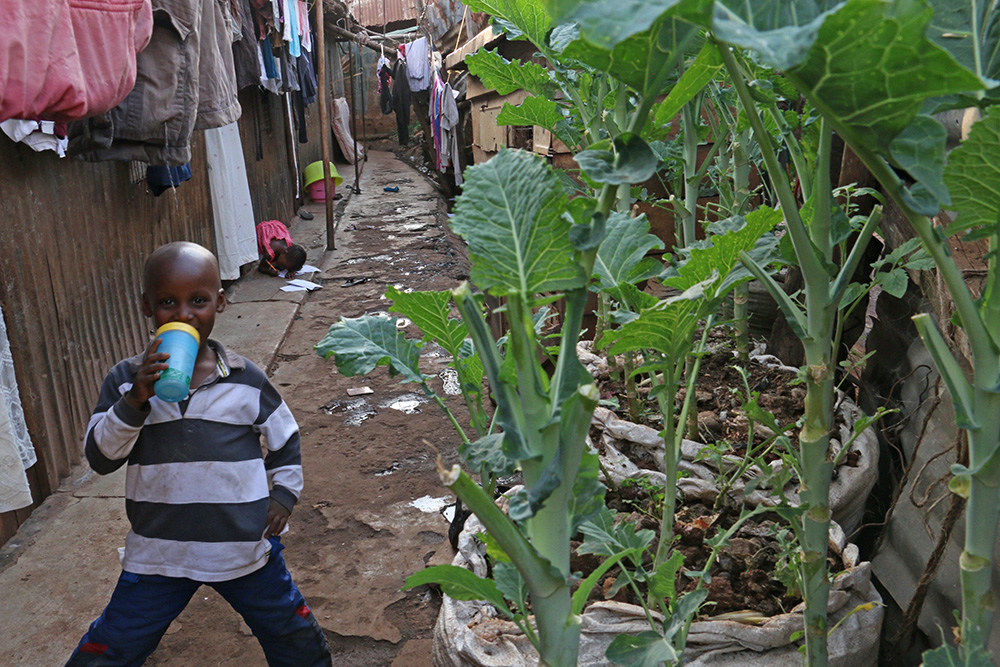
Little kids goofing around by the sack garden’s in Soweto West, Kibera. [Photo © Evelyn Harford]
Now, Nairobi’s city county is officially embracing urban agriculture. Until 2015, many farmers were operating on murky legal ground. In July 2015, urban agriculture reform passed the third reading in the county assembly. The new urban agriculture law aims to promote and regulate urban farming within Nairobi. Both municipal and provincial departments have made a commitment to increase investment in the sector to benefit the city’s poor including the most vulnerable: women and youth. And in February 2016, Nairobi city county recently announced a $2-million dollar investment into urban agriculture projects within the city — a sign that concrete change is brewing.
In the summer of 2015, I trekked the over 10,000 kilometres back to Kenya’s capital to delve deep into the world of urban farming in Kibera. I wanted to see how these farms functioned, what impact they have on individual farmers and the broader community and what government reform could yield for them.
The journey from Ottawa to Nairobi, Kenya.
This project focuses on female urban farmers because the majority of urban farmers in Kibera are women. The connection between women and agriculture is not just a rural phenomenon in much of Africa, women continue to also farm in urban centres. Women’s connection to food and the earth has fascinated me since my early days as an undergraduate. Women have been key to global food production and, as such, their participation within the urban agriculture movement is not surprising. I wanted to understand how women migrating from rural villages were translating their traditional role in subsistence agriculture into their new urban landscapes.

Maggie works with her team to prepare sack gardens under the hot Nairobi sun. [Photo © Evelyn Harford]
In this research project I sought to examine the linkages between gender inequality, food security and urban agriculture within the context of Kibera. I spent two months interviewing dozens of people and recording my observations of their daily activities within the slum. I interviewed nearly 60 people involved with urban agriculture in Nairobi including 20 female and three male urban farmers within Kibera.
I will refer to my sources from Kibera on a first name basis throughout the piece. It’s an intentional choice to give a personal and intimate feel to the people’s stories of whom I was so immersed in during my two months in Kibera.
In addition to the project objectives above, this research also gives voice to those who are all too often not heard; women from marginalized communities including those suffering from HIV-AIDS, and women from female-headed households. Voices from the slums are growing thanks to social media, but Western media rarely share positive stories hidden within the slums scattered across the global south.
My project seeks to answer a few key questions: Why do women farm in Kibera? How does it impact them? What does urban agriculture in one of East Africa’s largest slums tell us about the intersections of global food systems and gender inequality? What will Nairobi’s new commitment to urban agriculture mean for the women who farm in one the city’s most impoverished, politically and socially complex communities? What barriers do these urban farmers face and what needs to happen to maximize their potential as food producers and community change makers?

Maggie carrying kale to transplant into a new sack garden. [Photo © Evelyn Harford]
This website, in addition to profiling female urban farmers in Kibera, will highlight two male-run urban farms in order to highlight the gender dynamics witnessed by my first-hand accounts. Each woman’s story is titled to highlight their life experience and their journey into urban agriculture. Each story addresses some unique triumphs and challenges facing the women behind the urban agriculture movement in Kibera. One story “The Junction: From guns to gardens” focuses on men who run the Junction, a medium-sized urban farm in Kibera. This story is intended to highlight a male perspective and address the gender dynamics within their farm. Faith, one of the women who works at the Junction, will be introduced to highlight how gender inequality can seep into supposed “gender balanced” projects.
This project will also provide context for why all this talk of urban agriculture matters. At this point, you may by asking yourself why I focused on women specifically. In the section “Why women?” I will flesh out why women are integral to food production systems in the global south and will also assess how gender inequality impacts women in Kibera as it pertains to food security, land rights and urban agriculture reforms. In the section “Food insecurity” I will flesh out what food insecurity looks like in a place like Kibera, as well as, how women suffer disproportionately from food insecurity and poverty more generally. Nairobi passed an urban agriculture law in 2015.
The law has been made into law aims to promote and regulate urban agriculture within the city to reduce food insecurity for the urban poor who live in Nairobi. In the section “Urban agriculture reform”, we will explore how government support of urban agriculture in Nairobi could impact gender inequality, land rights, and training and education for urban farmers.

Zainab Jaffar, 14, is a young urban farmer in Kibera. [Photo © Evelyn Harford]
To conclude, “The path ahead” will examine how the promotion and development of urban agriculture in Nairobi and could impact the growing, African metropolis and the female urban farmers on the ground in Kibera. This project does not aim to paint a picture of urban agriculture as a cure-all for food insecurity and gender inequality in Kibera. While urban agriculture has helped some Kibera residents, there are many social, political and economic obstacles to making it equitable and productive. To wrap up, I will also address the policy pitfalls and considerations for future urban agriculture policy and investment within Nairobi.
My project uses official data when available, but relies heavily original reporting resulting from my specific case study.
I have referred to Kibera as a “slum” in the introduction of this project. Many international organizations, including UN-Habitat refer to Kibera as a slum, but its residents often find this term offensive because of its negative connotations. For them it’s not a slum, it’s home. Out of respect for the people I’ve interviewed, I will refer to it as an informal settlement from this point forward.
Welcome to the world of female farmers in Kibera.
Click on the images below to get started.
Scroll to the right to delve into the how urban agriculture intersects with gender inequality, food insecurity and Nairobi’s urban agriculture reform.
